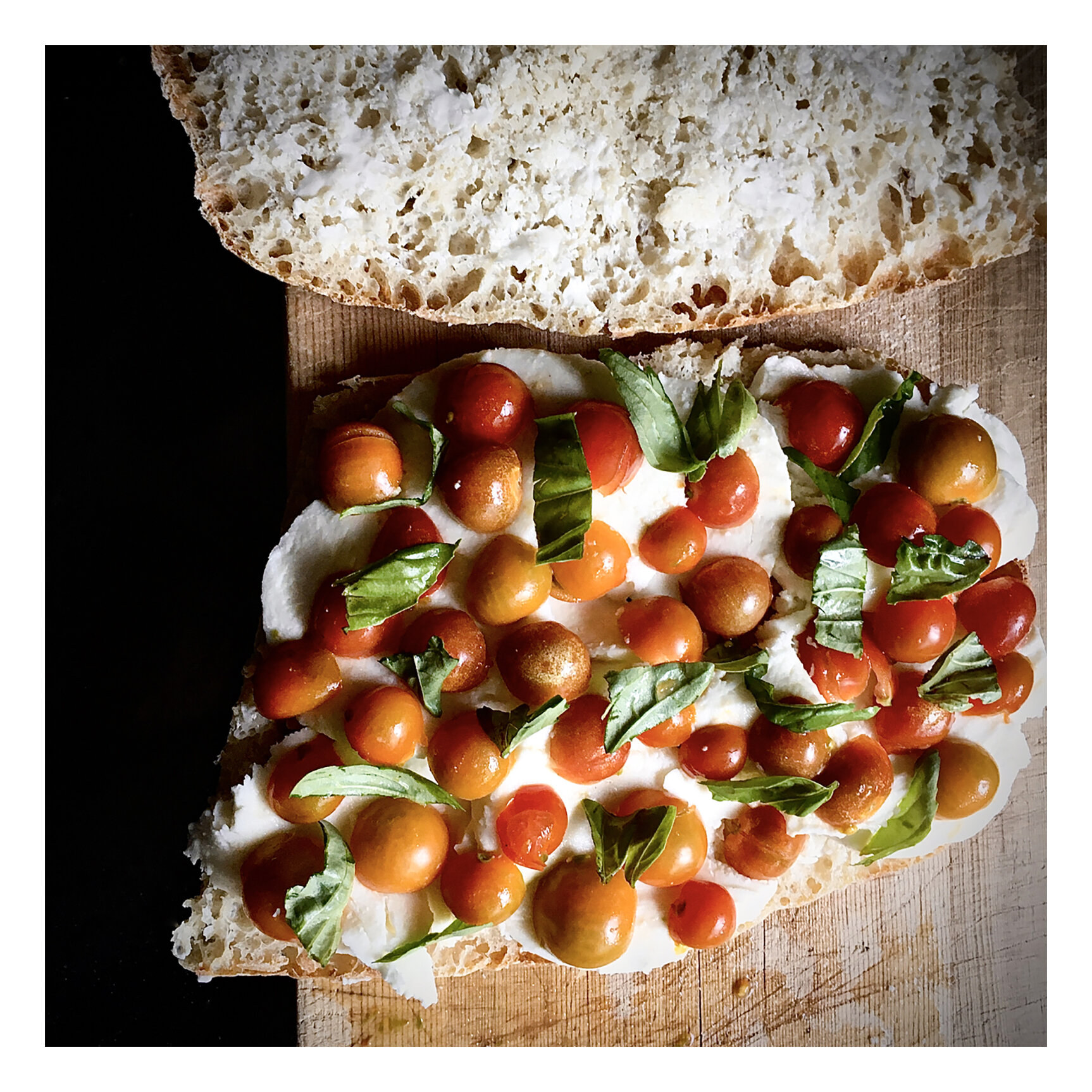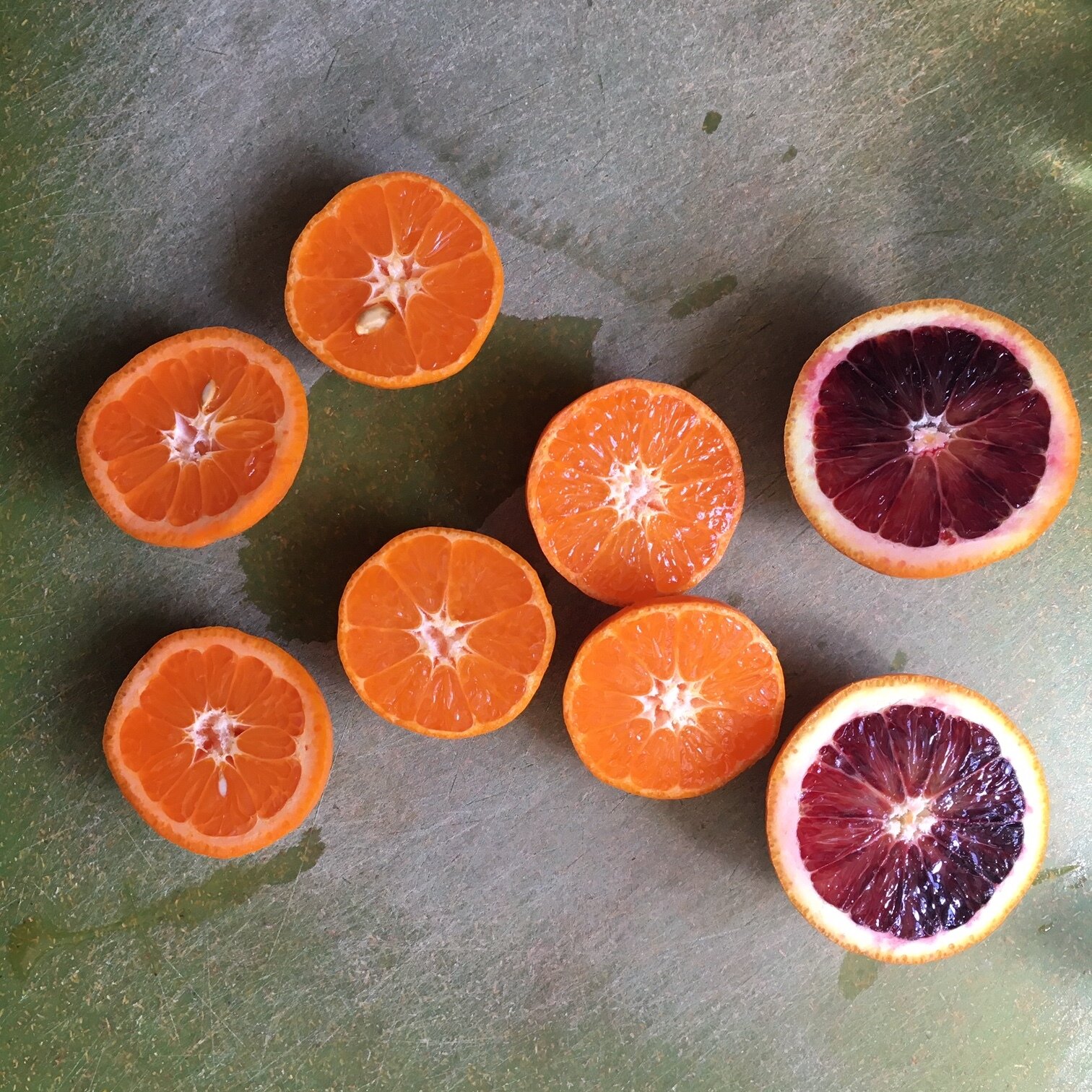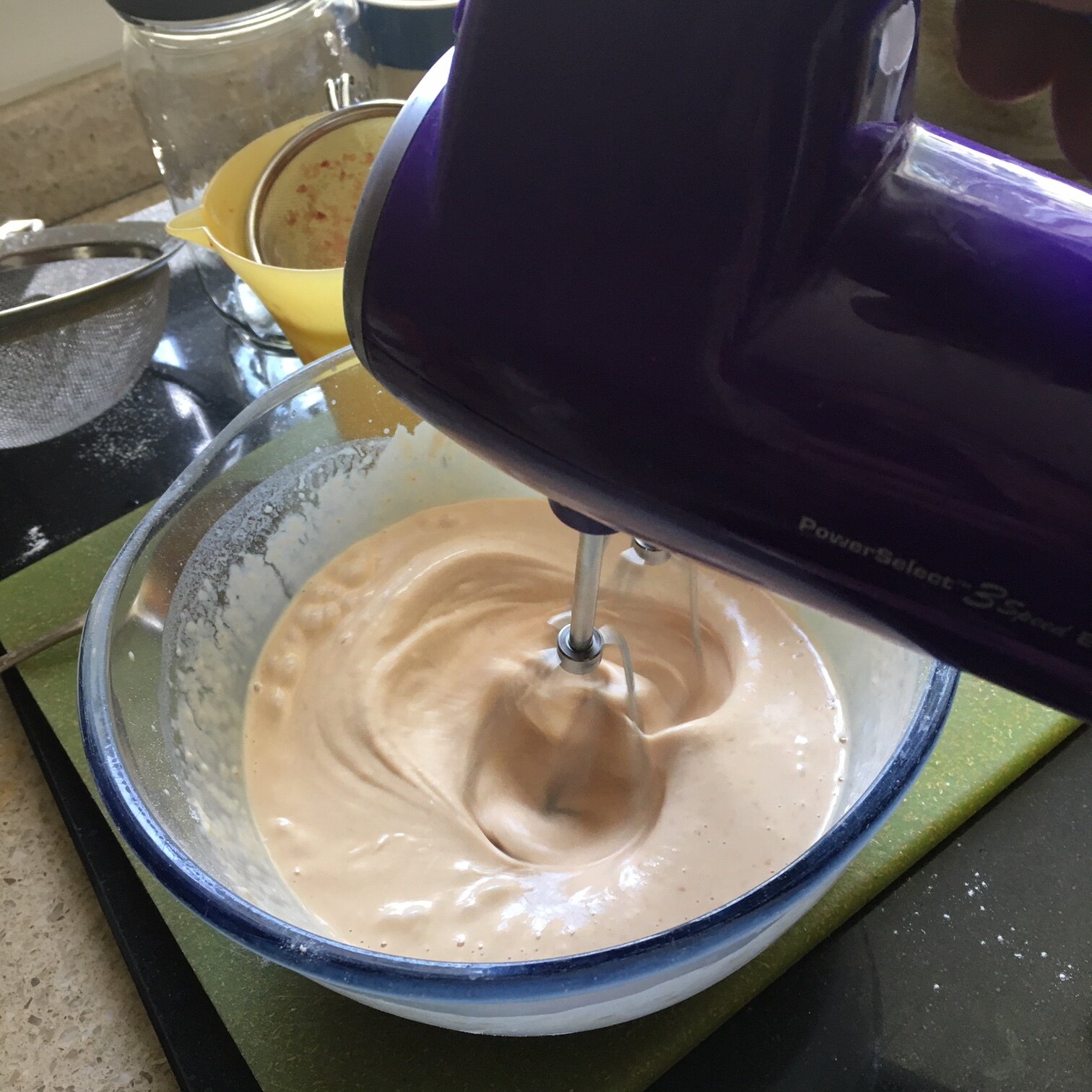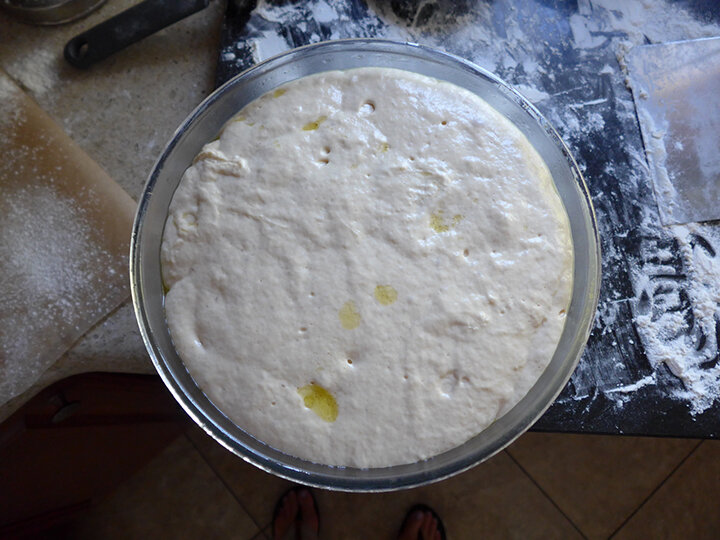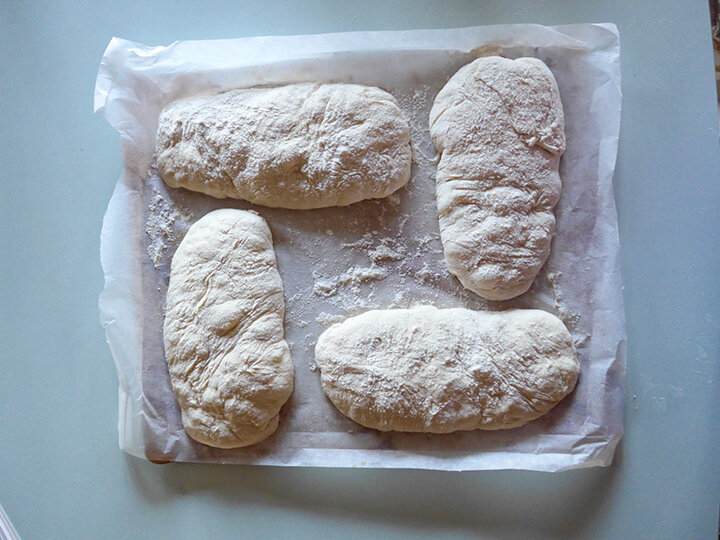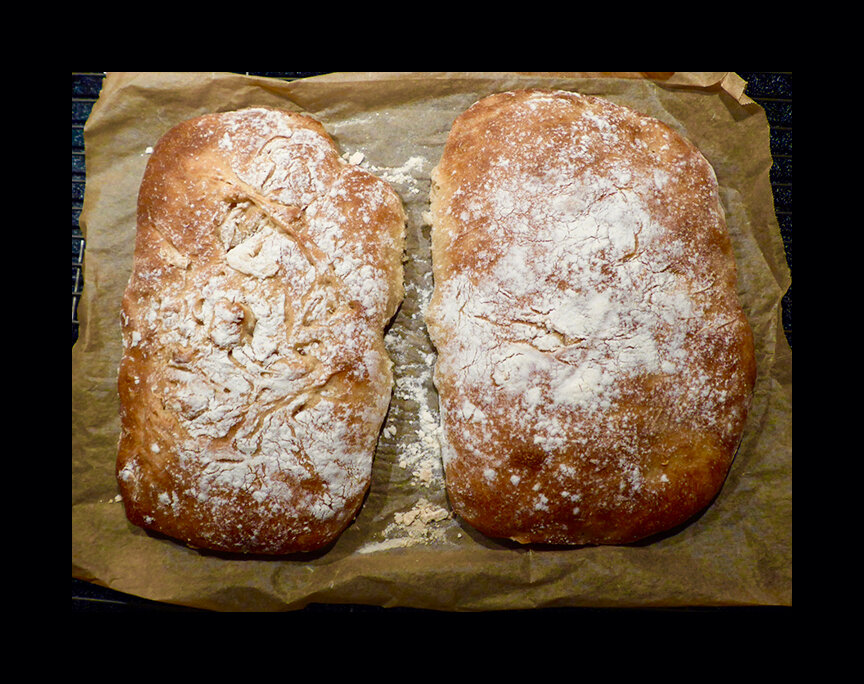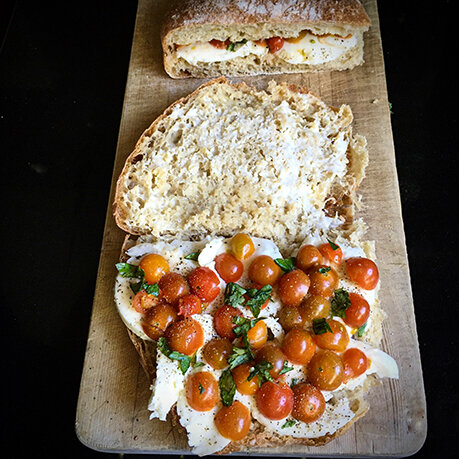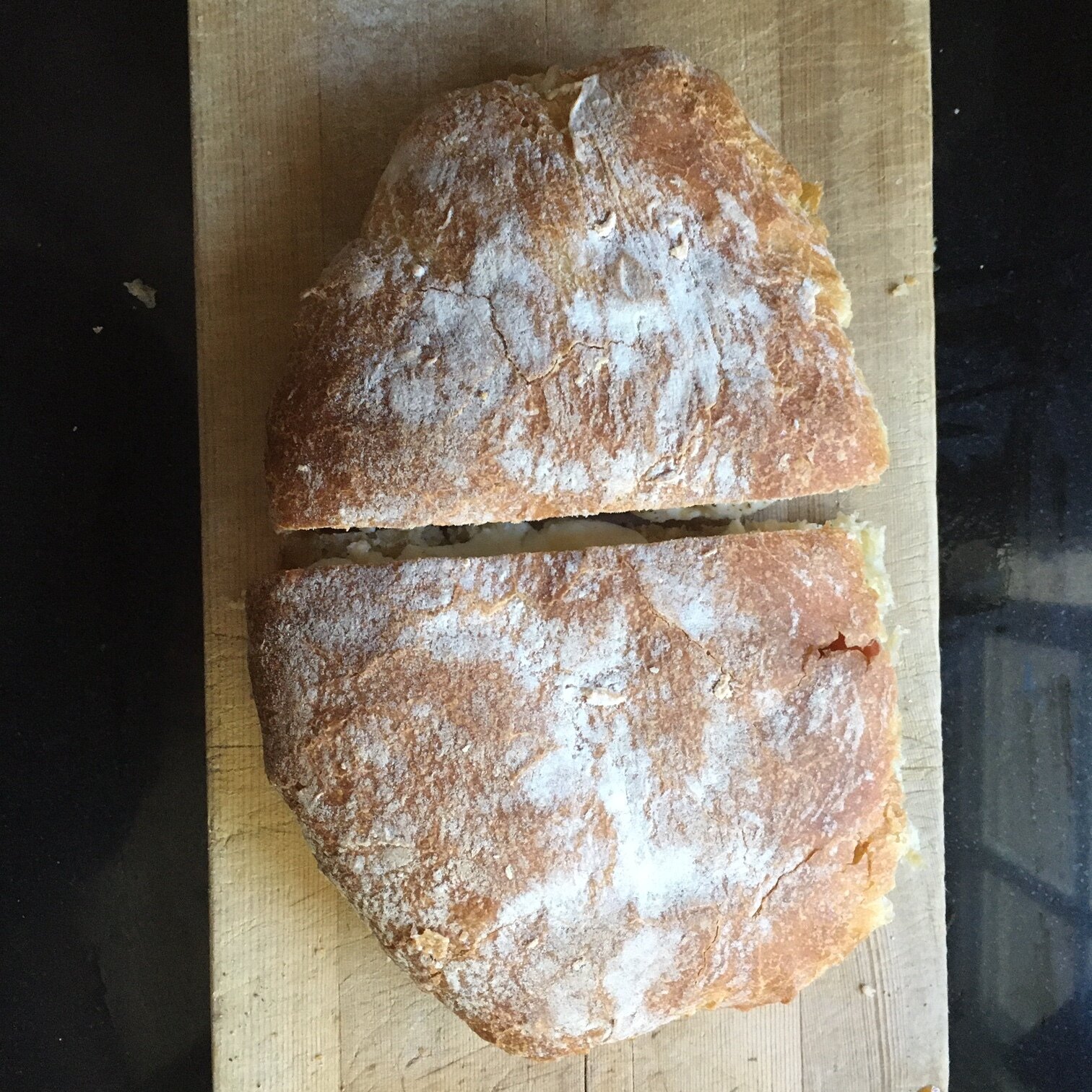Ciabatta—It’s Bread with Attitude, Dude!
CIABATTA WITH BIGA ACIDA
“It’s a Hole Lotta Love, or it would have been had Led Zeppelin been eating Ciabatta at the time.”
The word ‘Ciabatta’ means ‘slipper’ in Italian. I certainly don’t think I’ve put my foot in it this time though. I have to say that, without doubt, this is the best Ciabatta I have ever tasted. It is lively, fresh and pairs beautifully with mozzarella, tomato and basil, perhaps dipped in a balsamic vinegar with olive oil. One important point to note is that the Biga Acida will need to be made one day in advance.
Biga Acida — Italian Starter Dough
THIS Biga Acida should be made up to 24 hours in advance of making the Ciabatta dough.
1 heaped dessertspoon wholemeal flour
3 oz (85 g) Italian ‘00’ flour or plain unbleached flour
4 oz (114 g) unbleached strong bread flour
Juice of one blood orange, plus 2 large oranges or 4 clementines (approximately 7 fl oz (200 ml)
1 good tablespoon runny honey (preferably organic)
7 fl oz (200 ml) very warm water—i.e. finger hot and not so hot that the yeast will be killed off!
1 teaspoon dried yeast
1 heaped teaspoon caster sugar
Sieve the flours into a mixing bowl first. Into a measuring jug add the water, followed by the orange juice, honey and the sugar. Whisk in the yeast. Then make a well in the flour mix and add the contents of the jug.
Mix first with wooden spoon, incorporating all the ingredients evenly, then using a hand blender —or stand mixer— using the slowest setting, mix the whole mass for around 4 minutes.
Cover the bowl with cling film and set aside away from the sunlight for up to 24 hours. Holes and bubbles will appear—and disappear— in the meantime.
You’ll need two large custom fitted baking sheets if you have a baking stone (optional). Although unless you possess two baking stones, one lot of Ciabatta dough (x 2) will have to be baked at a time— OR two large baking trays, lined with a sheet of baking parchment in each.
For the yeast mix:
5 fl oz (1/4 pint / 125 ml) milk
5 fl oz (1/4 pint / 125 ml) water
1 teaspoon caster sugar
1 dessertspoon yeast
Then:
1 lb 1 oz (2 cups/ 500 g) strong unbleached (bread) flour
1.5 teaspoons sea salt
1 tablespoon Italian Virgin olive oil
On the following day, in a jug warm the milk, water and sugar until hand-hot. Whisk in the yeast and leave for approximately 10 minutes or until there is creamy froth on the surface.
Sieve the bread flour and salt into a mixing bowl.
Add the yeast mixture, half of the Biga Acida (keep the rest in a clean lidded-jar, refrigerate and use within seven days for your next batch) and the olive oil. Incorporate the whole lot using a wooden spoon first, then either keep in the bowl—or transfer to a stand mixer with dough hook.
If transferring the mixture to stand mixer, use a spatula to scrape the dough out (it will be very sticky and not at all handleable) and using the dough hook, mix for approximately 8 minutes on the slowest setting—then transfer back to the same bowl.
Alternatively, leave in the original bowl and use a wooden spoon in place of a dough hook. This will be a good workout! Bring the dough over and under using the spoon, followed by a quarter twist of the bowl. Do this for about 10 minutes, swopping over from right to left hand when one arm gets tired.
Cover the bowl with cling film and leave to rise for 1 ½—2 hours, or until doubled in volume.
Turn the dough out onto an amply-floured surface and dip the a dough scraper into some flour.
Divide the ciabatta dough into four even pieces, approximately 7 inches (17.5 cm) long, two per tray.
Sieve a little flour onto the surfaces and with floured fingers, press onto the surfaces of the dough to make dimples.
Cover with one or two clean tea towels (do not dampen these or the dough will stick to the towel as it is lifted off!) and leave for at least 1.5 hours.
Place the baking stone in the centre of the oven. Pre-heat the oven to 450ºF (220ºF).
If using the optional baking stone, transfer two of the ciabattas onto it by sliding the dough together with parchment paper onto it.
Bake these for 20 minutes or until golden and crisp. If it looks like they are getting a little too brown, cover with a sheet of foil.
Slide the Ciabattas and parchment paper onto a cake rack to cool. Cover with a clean tea towel but not the same one(s) that were used before the Ciabattas were baked!
These are of course at their best when they are enjoyed fresh on the day but excess loaves can be wrapped in greaseproof or waxed paper, then popped into freezer storage and successfully frozen for three months or more.
I have had quite a lot of experience making Ciabatta over the years and I can certainly tell you that the first loaves I used to bake were by no means perfect — they were dense and weighed heavily on the stomach.
I will be very happy to help if you have any questions about the making of this bread. For example, is it necessary to use up the starter dough after 24 hours in case it goes off? Please get in touch.
Wishing you all success with your Ciabatta…


